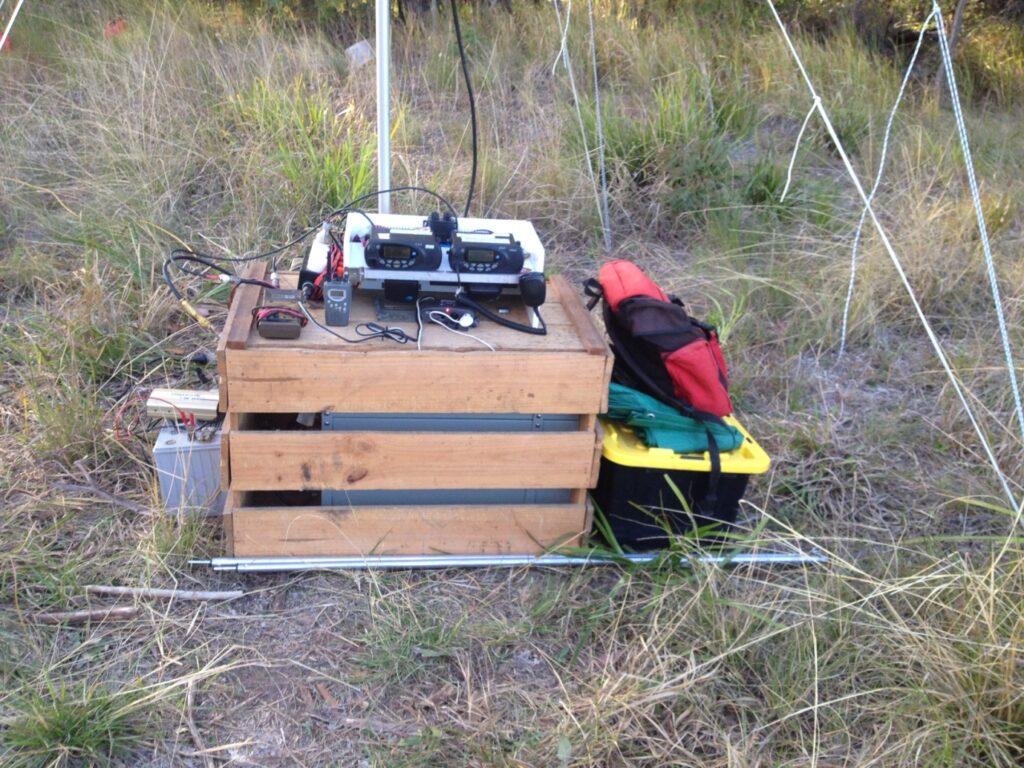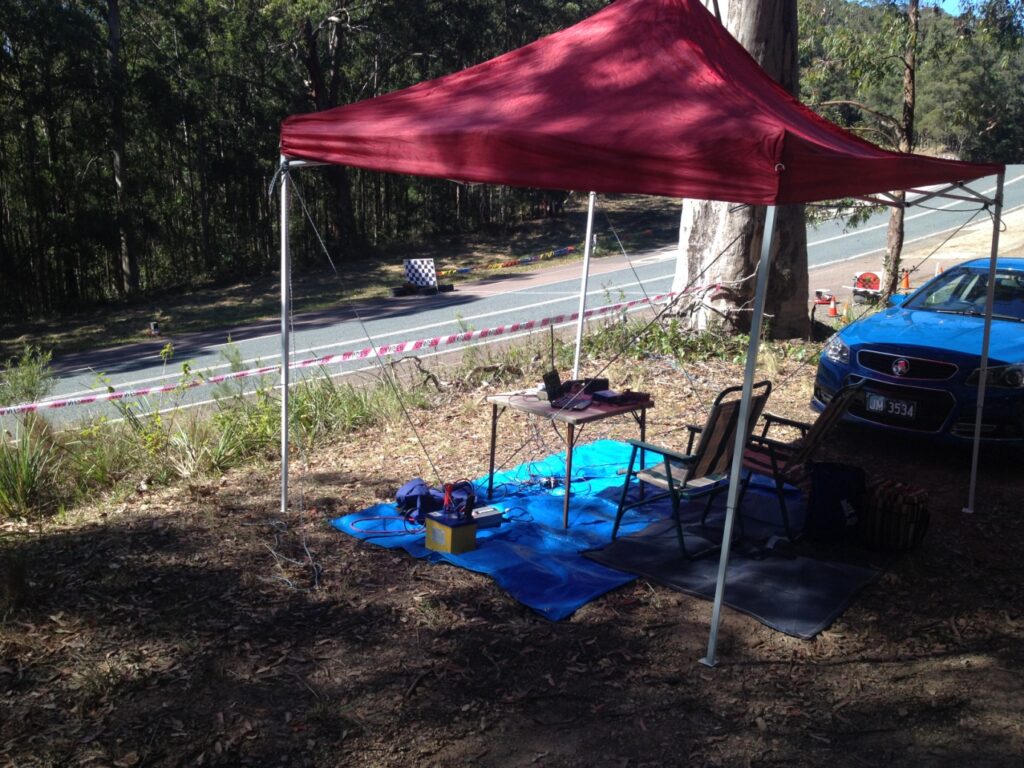The Bulahdelah Hill Climb is a motorsport event run twice yearly by the Myall Lakes Motor Sports Club Inc. It is patronised by a range of motoring enthusiasts with all sorts of vehicles. From rally bred Datsun 1600’s, Stanzas, Mitsubishi Lancer and Subaru Imprezza to virtually anything in between – Holden HQ’s and Toranas, Commodores, Falcons, Hyundai Excels, Subaru Forrester, Mercedes Benz and Volvo. Outright acceleration and the ability to corner are key as drivers engage the winding road and a couple of slaloms thrown in for good measure. On the day, there were 39 entrants.
For this event, we use a (not so) portable UHF CBRS repeater on the channel pair 7/37. A month prior to the event we advise the ACMA of its use as per the conditions on the apparatus licence.
In the week leading up to the event we get out the equipment, dust it off and give it the standard bench test.
The day before, we headed to the Bulahdelah area to erect the repeater mast, coax and antenna. The mast is not that high at 5m. The coaxial cable is a RG-8 specification (Belden 9913) to keep losses to a minimum and the antenna either a RF Industries Side Mounted Dipole or Vertically Enclosed Dipole for use on 470-490 MHz.

On the day of the event, we arrived on site at around 6.30AM to connect the electronics and make it all work. We used a Polar CN6X3X series duplexer to allow single antenna operation. For this particular event, we were using a pair of Tait TM8250 radios for the repeater – one for the receiver and the other for the transmitter. It was interesting to observe, but a nuisance to put up with, interference from a distance paging transmitter. Previously, we used the trusty old Philips FM828 and we just might go back to using one of those. The Philips has a bandpass filter built into the receiver front end – modern day radios do not. We might also go back to the Side Mounted Dipole (SMD) over the Vertically Enclosed Dipole. The polar response for the SMD antenna is a cardioid, so we have the option of trying to get such annoying signals into the null of its response.

